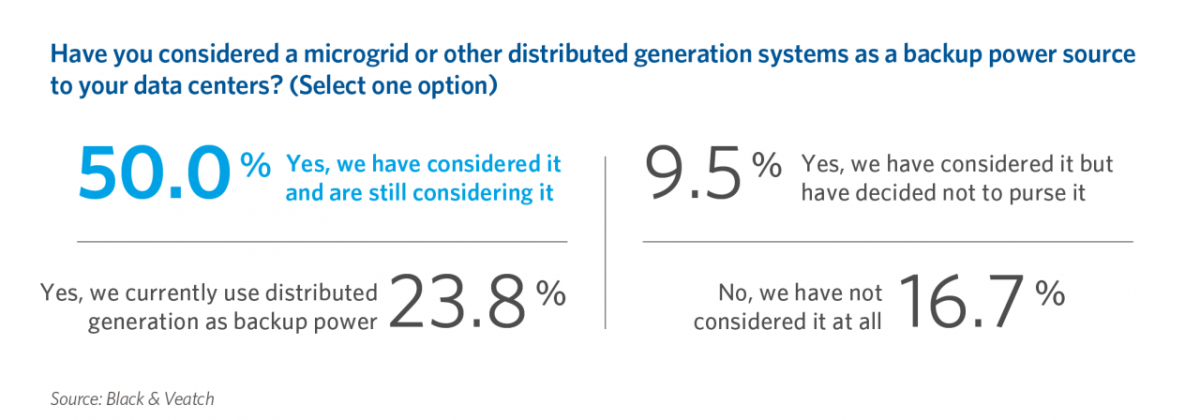Let’s Embrace Distributed Infrastructure to Decrease Power Outages

Let’s Embrace Distributed Infrastructure to Decrease Power Outages
By Wes Denton, Managing Director, Data Centers
Data Center operators and businesses need predictability in their power supplies. Their infrastructure has to operate regardless of grid stability, weather conditions and other factors that threaten their systems.
Network problems, IT system failures and hosting disruptions are significant reasons for data center outages. The biggest culprit, though, remains interrupted power supply, according to research from the Uptime Institute.
In fact, power outages were responsible for 36 percent of the biggest global data center failures from January 2016 to mid-2018. Network issues were the problem in 25 percent of the cases, and IT/software issues caused outages 22 percent of the time.
Forty-six percent of failures cost operators $100,000 to $5 million, with some incidents resulting in damages that reached the tens of millions, the institute reported.
Also costly are the public relations nightmares many businesses face following prolonged outages. For example, the 2018 network failure that cost PSA Airlines $35 million included 3,000 flight cancellations, according to USA TODAY. Poor customer experiences, as well as data losses and breaches, likely lead to declines in future business across all industries.
And the outages plaguing data centers have only gotten worse.
Uptime Institute reported that 31 percent of operators had experienced IT downtime or severe service degradation in the past year, up six percentage points from the year before. The most troubling finding: the majority of incidents were preventable.
For those outages caused by a loss of power, data center operators now have an opportunity to reverse the trend, and more importantly associated declines in revenue and brand power.
The Most Resilient Data Centers Make These Investments
As renewable energy becomes more mainstream, the time is right for the data center industry to embrace on-site microgrids, fuel cells and battery storage, as well as photovoltaic solar and wind power. Self-sustaining data centers are possible through a combination of power supply options, demand-side management and energy management software.
Plus, data centers use a lot of power and might face public scrutiny for carbon emissions. At a time when most of the major internet providers have pledged to adopt renewables for power generation, data center operators have an opportunity to help them meet sustainability goals with microgrids and distributed generation.
On-site power generation and battery storage also allows operators to return excesses to the grid and strengthen their social licenses to operate. In addition to solar and wind power, supply options include biogas generation, geothermal energy and hydropower.
According to Black & Veatch’s 2019 Strategic Directions: Commercial & Industrial Survey, nearly 60 percent of respondents were considering microgrids or other distributed generation systems as backup power for their data centers. Twenty-four percent were using distributed generation as backup power.
Utility-scale battery energy storage can replace generators as the primary backup power source. Distributed, redundant technology for uninterruptible power supply, along with supervisory control and data acquisition (SCADA) systems for each storage unit, is a cost-effective method for achieving backup goals. SCADA provides the ability to monitor throughput against all power phases and act immediately to avoid overloads or cascade failures.
Before investing in a microgrid or distributed generation, operators should consider these questions:
- What devices will be powered, and how will energy be stored?
- What’s the goal: emergency power, revenue, reducing power purchase costs, improving power quality or increasing resiliency?
- Is the microgrid software customizable to my needs?
- What are the limits on current functionality versus future expandability?
Resilient data centers also have diverse network connectivity, multi-cloud storage, and software application resiliency. Hardware will eventually fail. What matters is how well the application layer continues to provide end-user services when failure occurs.
As they adopt distributed networks, data center operators also should focus on replacing old equipment with more efficient models. While density continues to double every few years, air-cooled systems and so-called “best-effort internet networks” could be strained to keep pace.
About the Author
Wes Denton is currently the Managing Director for Black & Veatch’s Data Center business. He manages teams that provide the engineering, planning, design, construction, and operations & maintenance of data centers and other mission-critical programs worldwide. Denton has more than 20 years of experience in business operations and management, and is responsible for project management, and safety and regulatory compliance.

